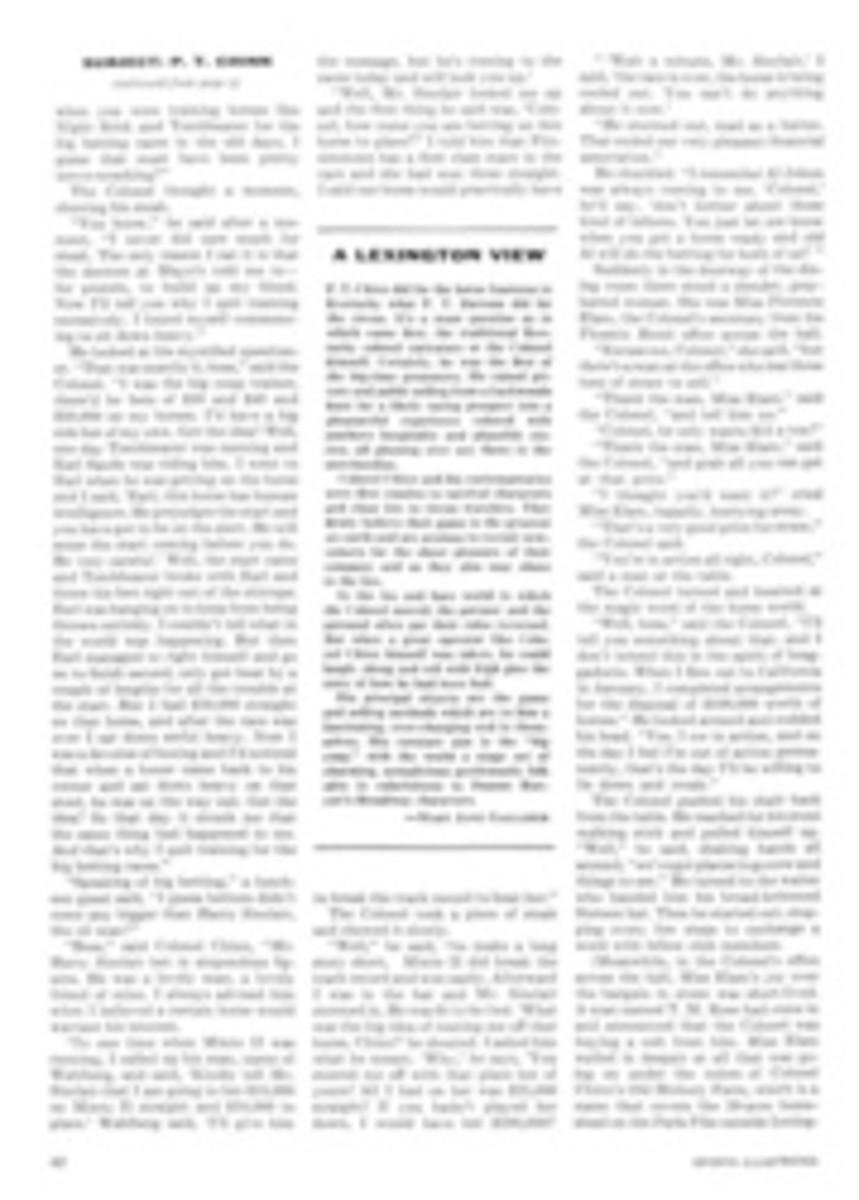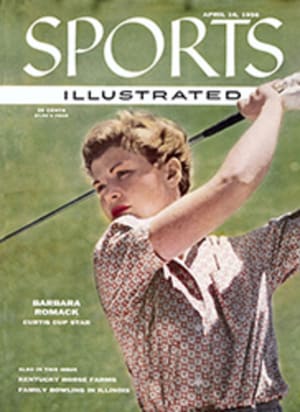
ALL ON THE ALLEYS
The low-slung, white-walled, $550,000 Park Forest (Ill.) Lanes shown on the following pages was built in August 1954, during a steady, orderly migration of bowling from city business districts to the suburbs. Since then the migration has become a stampede, for what occurred at Park Forest took place throughout the country: bowling boomed as a family sport. This has created a happy situation not only for the businessmen foresighted enough to take bowling to Suburbia, but for municipal authorities who report a sharp decline in juvenile delinquency in those areas where the bowling center has become the community and family center. It is also a happy situation for bowling as a sport, for the stars in the bantam and high school leagues today will compete for the collegiate and professional championships tomorrow.
Typical of family bowling today are the Benjamin Levensons (above) of Park Forest, Ill. Mr. Levenson, director of a home for the aged, has bowled for 25 years. His wife, Diana, and the children started bowling only after Park Forest opened. Now the family gets together on occasional weekends; Mrs. Levenson rolls afternoons when the children are at school, Leslie, 12, and Stephen, aged 9, are in the Bantam League, and 14-year-old Marion competes in a junior league. The three children are among 100,000 members of the American Junior Bowling Congress, an offshoot of the American Bowling Congress, which has 2 million members. Milton Raymer of Chicago, secretary of the AJBC, estimates there are 400,000 youngsters aged 5 to 18 who compete regularly at least once a week.
Raymer, a distinguished-looking, gray-haired man of 50, became interested in bowling as a deterrent to juvenile delinquency when he was a teacher at Tilden Tech High School, Chicago, in 1937. That year he started a bowling program with 16 high school students. Within a few years not only his own school but many others joined. By 1954, when the Junior Congress was formally organized with Raymer in charge, a few thousand children were bowling regularly. Today he has several assistants and 100 certified instructors who hold free training clinics in 18 states. Some of the results of his work have been neatly packaged into a film, Young America Bowls, which currently is being shown at many public theaters and numerous private clubs. Administrative costs are defrayed by the National Bowling Council, a group composed of representatives of the manufacturers', proprietors', and bowlers' organizations. Children pay 256 a year dues, which makes them eligible, among other events, for the National Mailographic Tournament, a handicap contest in which boys and girls roll on their home lanes and mail the results to Raymer. This year's tournament—won, incidentally, by a boys' team from Buffalo, N.Y. and a girls' quintet of McPherson, Kan.—drew 3,745 teams, or 18,725 youngsters.
Perhaps the most significant result of Raymer's spadework was the growth of high school bowling. It has become an accredited course in many schools. This has led to intramural, then inter-scholastic competition, and it has become necessary to form three separate 12-man leagues and conduct roll-offs for the championship.
College and university leagues, unlike those in high schools, are not generally affiliated with bowling associations. Their members are too old for Raymer's group, whose age limit is 18, and their schedules often are too erratic (because of exams and holidays) to qualify them for regulation ABC play. Many take the game seriously, however, and compete in sectional tournaments, such as the Pacific Coast event held last week at the University of Oregon, the Eastern Intercollegiate at the Bowlmor in New York, and special tournaments at Southern Methodist University and the University of Ohio. More than 200 colleges and universities conduct intramural contests and many student unions have their own alleys. Representatives of the Association of College Unions, in national conference last week at Purdue, attended the grand opening of the university's 14-lane layout, a modern establishment equipped with automatic pin-spotters and under-lane ball returns.
"We get the families," said Ben Karm, co-owner of the Park Forest alleys recently. "The bantams organize and become juniors. We lose them when they go off to college or to work, but first thing you know we get them back again—with their families."
PHOTO
RICHARD MEEK
LEVENSONS OF PARK FOREST BOWL AS A FAMILY
PHOTO
RICHARD MEEK
AIRY AND DECORATIVE, PARK FOREST ALLEYS TYPIFY BEST IN COMMUNITY BOWLING CENTERS
PHOTO
RICHARD MEEK
GRACEFUL APPROACH is executed by 18-year-old Marilee Anson, dental assistant, one of the club's 700 women's league bowlers.
PHOTO
RICHARD MEEK
BANTAM LEAGUE bowlers, age 9 to 12, roll with lightweight balls. Here Les Levenson seeks a nine-pounder. Still younger children roll in the tiny-tot leagues.
PHOTO
RICHARD MEEK
FAMILY BOWLING is Park Forest's forte. Of 4,500 weekly patrons, 2,000 bowl regularly in leagues and clubs. Bowling has become an integral part of suburban life.

